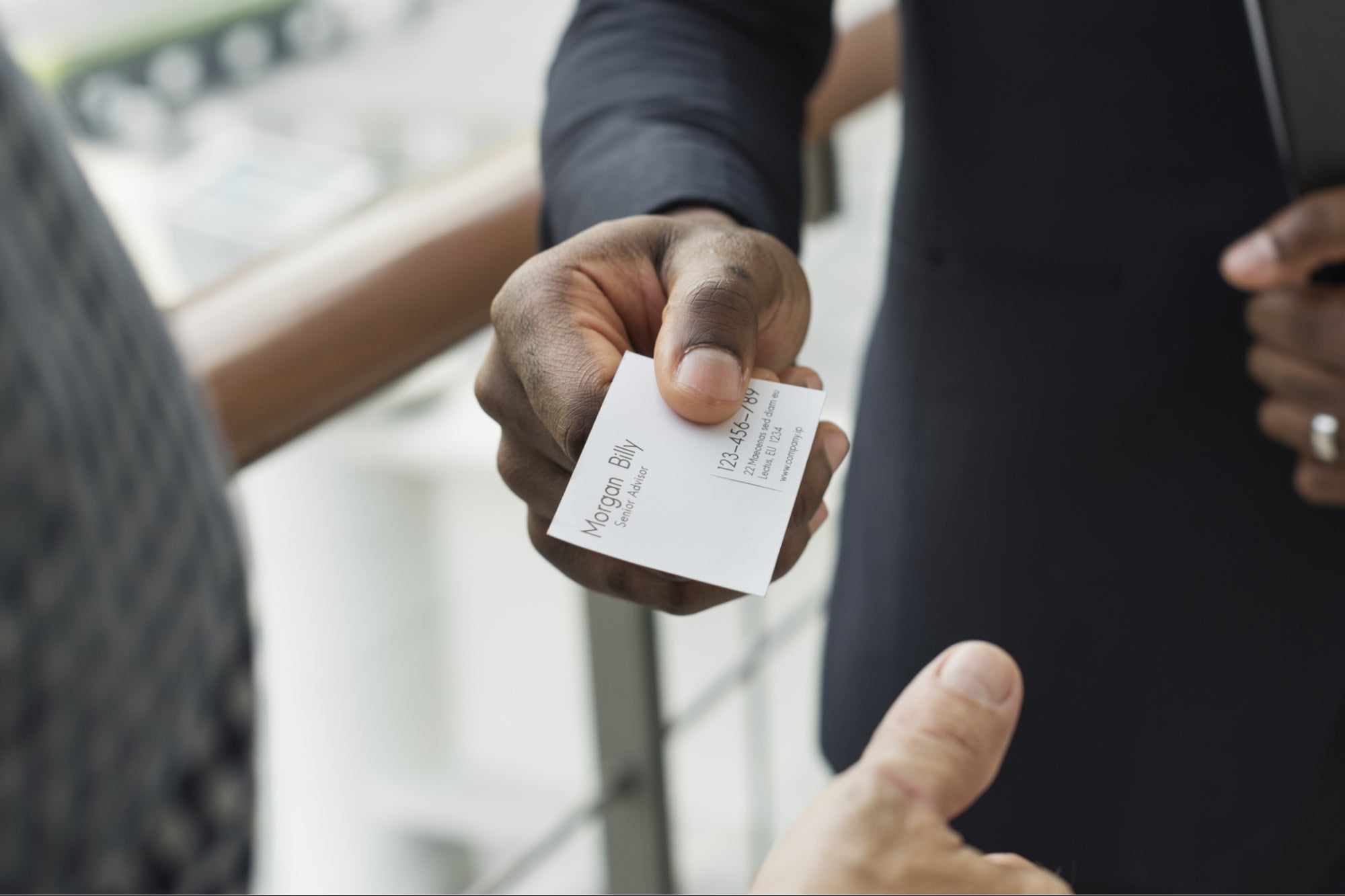While digital communication, apps and video calls are all the rage, there’s still a strong case for physical business cards.
4 min read
Opinions expressed by Entrepreneur contributors are their own.
Recently, I was at a huge conference, the Podcast Movement, in Nashville. Thousands of professionals in the podcast community, many of us relative strangers, were there. After sessions, before sessions and in between sessions, we were networking and connecting with each other.
Some had business cards, and some didn’t. And it got me thinking: Are business cards still important?
There were three types of people at the conference:
- One type, like me, had a full stack of new business cards.
- The second type wanted to connect via Instagram, LinkedIn or a third-party “business card” app.
- The third type had no connection options and had to fish a crumpled piece of paper from his or her wallet or handbag.
Related: 8 Ways To Get the Most Out of Networking Events
Are business cards important?
Here’s why I like business cards and think they’re an essential part of your personal brand.
Business cards are the fastest and easiest ways to communicate your contact information to someone else or receive theirs.
With a quick flick of the wrist, I can receive or give my contact information to another professional. Now you can even personalize your business cards with the help of Personalized Stationery provider.
When someone shares his or her information with me via LinkedIn, sure, we’re a LinkedIn connection, but I have no clue who that person is or how to find him or her a week or even an hour later. My new connection is last in a myriad of contacts.
With a third-party app, I have to enable the “NFC” antenna on my phone to receive the contact information. Most of us don’t have this on by default.
Business cards can help me quickly and easily share my contact information with someone else.
Related: 21 Apps To Boost Productivity, Accountability and Success
How to design a great looking business card
If you’re going to start using business cards, make sure it looks as professional as possible.
Too many times, I’ve seen people using business cards where the font is too small or just hard to read. If you use fonts that look like cursive handwriting, I can’t clearly and quickly read your name. Is it an “L” and “I” or a “J”?
Your business cards should “pop.” They shouldn’t be too cute, but be sure to avoid gray cards with black text or white cards with beige text.
Not only is it hard to read, but it also doesn’t stand out.
Does this mean it must be bright pink or screaming yellow? Of course not. However, when I receive your card, it should stand out among the many I’ve been collecting.
You should also consider how cheap your card feels. While the card stock need not be engraved with metal or gold, it should be “premium” weight paper. You should order it from a reputed Printed stationery provider.
Related: 3 Reasons Simple Isn’t Always Better in Logo Design
How to create your well-designed card
There are many ways to get a well-designed card.
You can find a great designer on Fiverr, UpWork, 99 Designs or other services. Two of the most popular places to get your business card printed are Vista Print or Moo.
You can absolutely design your card yourself or go to a local printer too.
If you choose to design your card yourself, consider a template from Canva, PicMonkey or Adobe Photoshop.
I’ve heard some people tell me that business cards are old-fashioned, and maybe they are — but they work.







